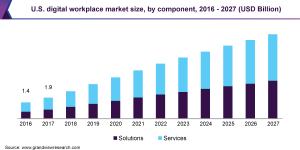I am often asked by company executives, “What is the one thing I can do to improve my organization’s culture?” The truth is that there is not simply one thing that will improve how your employees feel about what they do and who they do it for. We define culture as the collective hearts and minds of an organization. As such, there are many things that affect employees’ attitudes about their work and the company they are working for. When we conduct culture assessments, we often find that many mechanisms, processes, and activities connected to the employees’ experience at work play a part in how they feel. We also find that the main influence on the employee experience is the employee’s direct manager. So, here are 10 tips that leaders at all levels should follow to ensure the right employee experience and improve your company’s organizational culture.
1. Create and communicate meaningful values
Values should be more than some philosophical BS. Values are a guide for everyone in the organization on how to act and interact with each other, customers, and the community. We recommend our clients have no more than 5 values, so the values are easy for employees to remember and understand what is important to the company. Leaders must communicate not only the values, but also the expected behaviors associated with each value. This helps employees understand what is expected, which reduces uncertainty and ensures everyone is aligned on how things should be done at the company. The most important way to communicate values is for the manager to set the example. Values are not just for frontline staff, but for everyone in the organization. For values to have meaning, frontline employees must see their managers adhering to them daily.
2. Conduct proper selection
All too often, managers are in a rush to fill a position and neglect to ask the right questions to ensure the right fit. Managers often use experience as the key factor when selecting employees, but if you want the right person, someone who will work well with others and be successful, the person must fit with the company’s values and organizational culture. I recommend using interview questions tailored around the company’s core values as a way to get to know candidates better and anticipate how candidates will contribute not only in their particular role, but also to the company’s culture. I also recommend using a behavioral-interview approach where candidates must engage in an activity as part of the interview process. This pushes candidates out of their comfort zone and provides an opportunity to assess their behavior, versus just asking questions.
3. Improve orientation and onboarding
Almost 30 percent of new employees quit within the first 90 days on the job. New hires must receive an effective and engaging orientation (first 1-2 days on the job), as well as a well-thought-out onboarding process (first 90 days on the job). It is critical that new hires are set up for success during this time to ensure they feel connected to the job, their team, and the organization. This can be done through establishing the right priorities on day 1, making employees feel welcomed from the start, executing an organized and effective training program, and testing new hires for comprehension and ability between the 30 and 60-day mark to ensure they are on the right path.
4. Enable and empower employees
Leaders must give employees the right information, the right tools, the right amount of support, and the control and power to make decisions. Leaders must set the expectation, provide employees with what they need to succeed, and then let their employees do their jobs without micro-managing every detail. It’s important to empower employees and build trust.
5. Engage employees all year round
Employee engagement continues to be a major issue, with only 34 percent of employees engaged in their work. Leaders can engage employees by ensuring employees know how they make a difference for the company as this helps them feel connected to the company’s mission. Educate employees on the company purpose, annual objectives, and various action plans. Keep employees informed on company scores and progress towards goals, and involve employees in developing plans to improve the company.
6. Coach employees
Informal feedback helps employees understand how their behaviors measure up to what is expected. And yet, 32 percent of employees wait more than 3 months to receive feedback from their manager, leaving employees unsure of how their performance measures up to the expectations. For informal feedback to be effective, it must be timely, fair, balanced (providing both positive and constructive), explain “why” the behavior is important, personal, specific, and must include a sincere thank you or gesture of appreciation.
7. Communicate effectively with employees
When conducting focus groups with employees, we often find that lack of communication is a common complaint. When we mention this to managers, they are often surprised as they feel as though they are communicating with their teams. The problem is usually not the quantity of communication, but rather the quality of communication being transmitted. To improve quality of communication, make sure to keep your words simple and to the point, consider your body language and tone of voice, and ensure the timing and setting is right. Use multiple channels to convey your message and ensure it is properly reinforced. Remember that communication goes two ways, so check to ensure your employees understood your message by asking them questions such as, “What are your next steps?”
8. Recognize employees how they want to be recognized
Recognition is one of the best ways to make your employees feel appreciated, reinforce positive habits, retain your best talent, and drive engagement; by letting them know that what they do makes a difference. However, employees often do not feel appreciated. In fact, 63 percent of employees do not feel as though they get enough praise. Employees vary in how they learn and process information (visual, auditory, kinesthetic), so managers must understand that some employees like to hear their recognition, some like to see it, and others like to experience it. We recommend managers to use a combination of recognition methods based around Say, Write, or Do. Some of our favorites are, mention recognition in meetings, write a thank you card, set up a fun recognition program, or work alongside an employee doing a task they may not enjoy doing. Every employee is different, so the recognition needs to be customized to each person.
9. Have tough conversations and make tough decisions
Leaders who do not hold their employees accountable create a negative environment where high performing employees become frustrated, reduce their effort, and eventually leave. Leaders must get comfortable with having tough conversations with those who are not displaying the expected behaviors. Leaders must also make tough decisions and let go of those employees who are not cutting it.
10. Show employees that you care about them and your organizational culture
Show employees that you care about them as an individual and that you are dedicated to improving your company’s organizational culture. Do so by being available to support them and listen to their needs. When listening, ensure to give your full attention and listen empathetically to understand where the employee is coming from. Always show respect for employees and appreciation for what they do. Get to know your employees and what they care about. Last, be honest and open when communicating with employees as this is a key factor in establishing trust.
I encourage leaders at all levels to take a look at your employees’ experience and identify areas where improvements can be made. Culture is created by a culmination of various factors and influences. Although culture can be complex, there are actionable ways to change and improve it.
To learn more about how to improve your company’s organizational culture, access Achievers’ e-book: “Recognition Culture: The MVP of Employee Experience.”‘
Business & Finance Articles on Business 2 Community
(45)








